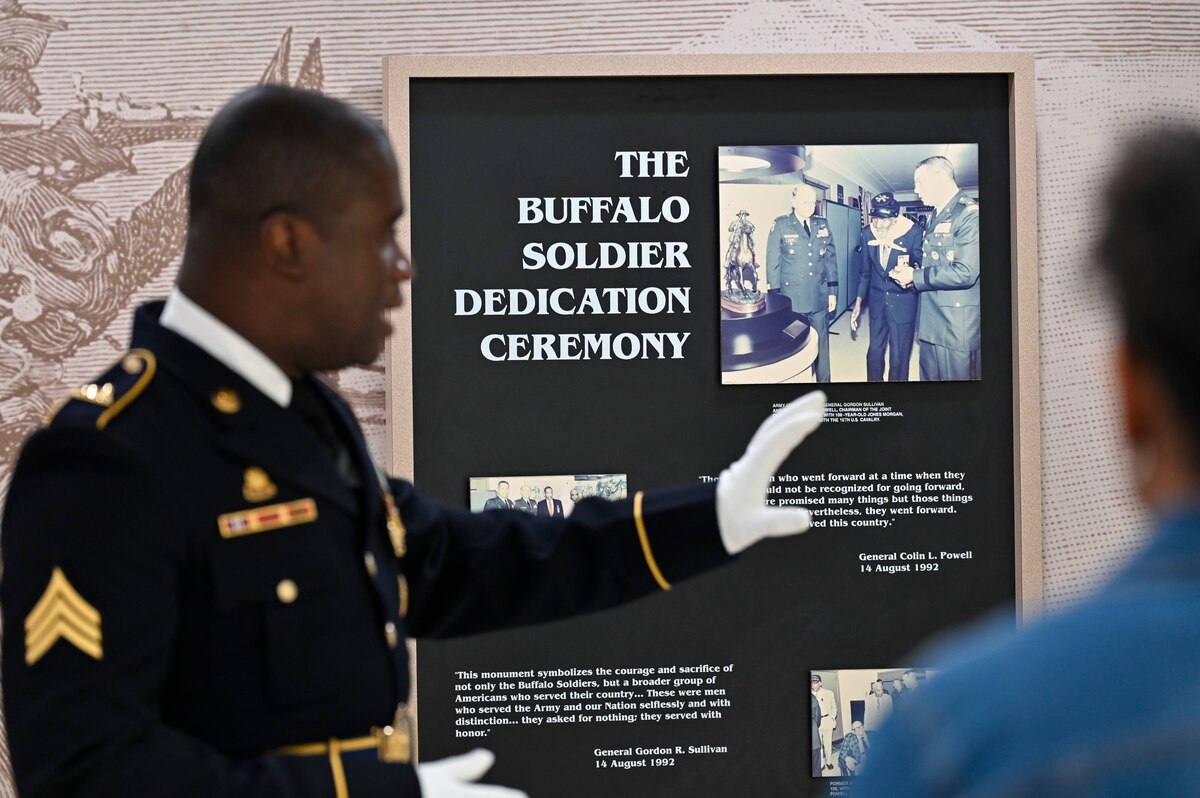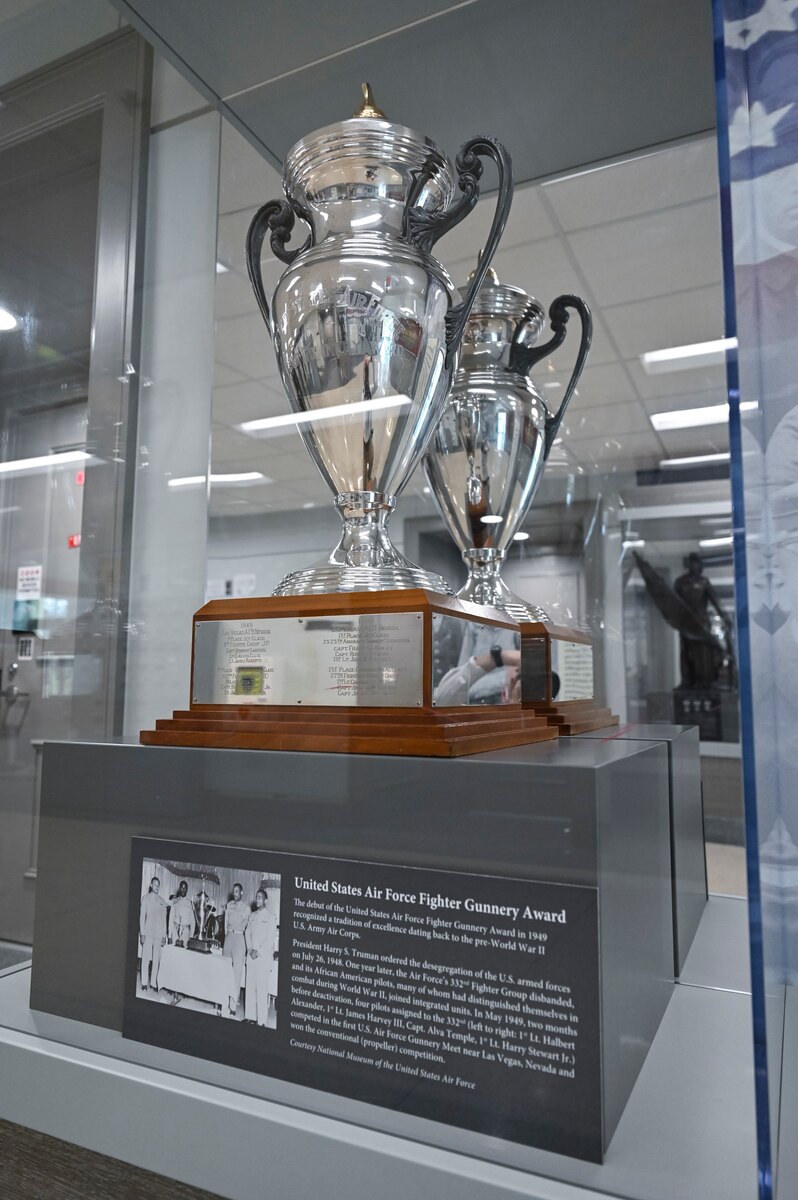This February, Department of the Defense employees toured a special display recognizing the excellence of past aviators, the Fighter Gunnery Trophy.
Won by members of the 332nd Fighter Group in 1949, the trophy is on loan from the National Museum of the United States Air Force in recognition of African American/Black History Month.
Bruce Jones, strategic initiatives program integrator for the Installation Planning Branch of the Air Force Civil Engineers, learned of the Fighter Gunnery Trophy and wanted to bring it to the Pentagon. His hope was that more people would learn the story of those who earned the propeller group class of the first aerial performance competition in 1949.
"I have been helping to correct and commemorate the history of the Tuskegee Airmen for the last few years," Jones said. "Through my work with the Air Force historians … I was able to connect with the Air Force Museum and develop a plan to bring the trophy here to [Washington] D.C."
The trophy has been placed in a prominent, temporary display within the "African Americans in Defense of our Nation" corridor of the Pentagon through March 6. The corridor received a major redesign and upgrade to help educate visitors and DoD employees about the value brought by diverse American heroes.
In addition to highlighting the many achievements of the Tuskegee Airmen, David Bragg, deputy director of the Field Heritage Program, was responsible for bringing to light other unsung heroes. Two that he mentioned were Maj. Gen. Marcelite Harris, the first African American female general officer in the Air Force, who broke several barriers as she worked her way up the maintenance officer ranks, and Maj. Gen. Lucius Theus, who was asked by the Secretary of Defense Melvin Laird in 1970 to chair the interservice task force on Education in Race Relations at a time when racial tensions were high.
"When I joined the Air Force in the early 1970s, I immediately experienced some of the training that came from General Theus' team designed to mitigate racial tensions in the service at that time when there were actually race riots happening at military installations," Bragg said. "I'm not saying that they cured all problems, but what he did was a positive starting point."
Other heroes that Bragg highlighted when working on the corridor upgrade included:
- (At the time) Maj. Christina Hopper - Was selected to fly the F-16 in 2000, becoming one of only two African American females and 50 total female fighter pilots in the Air Force at the time. Following the events of Sept. 11, 2001, she flew numerous combat air patrol missions in support of Operation Noble Eagle and then deployed to Kuwait supporting Operations Southern Watch and Iraqi Freedom, where she flew more than 50 combat missions. Hopper's aircraft was struck by lightning during one of those mission, but her formation continued to the target, and her bombs accurately hit their mark, causing the adversary Iraqi Army to retreat from the fight. She earned her fourth Air Medal, the Aerial Achievement Medal, and the Combat Action medal for her service in Operation Iraqi Freedom.
- Master Sgt. Delorean Sheridan - This Air Force combat controller was awarded the Silver Star for his actions in March 2013 when, after a coordinated attack against his Army Special Forces team, he neutralized the shooter, moved his injured and deceased teammates to an extraction point, and called in six medevac flights, ultimately being credited with saving 23 critically wounded personnel.
- Maj. LeRoy W. Homer, Jr. - A U.S. Air Force Academy graduate and C-141 pilot, Homer served in operations Desert Shield and Desert Storm and received commendations for flying humanitarian operations in Somalia. On Sept. 11, 2001, Homer was the first officer for United Airlines Flight No. 93, and based on several sources available regarding the fate of Flight No. 93, the two pilots were the first to fight against the terrorist threat, and along with the crew and passengers, ultimately saved Washington, D.C., from the threat.
"As a veteran who also works as a federal civilian, there is so much history here in the building that many of us rarely take time to stop and recognize," said Jacqueline Shelton, U.S. Strategic Command Washington Liaison Office executive officer. "By coming together with fellow Pentagon members, we got the opportunity to learn together and honor the stories of others."
Shelton and Jones both expressed a desire to share the history of those who have come before to inspire future heroes to serve.
"Servicemembers and civilians who work tirelessly at the Pentagon to help improve the Department of the Air Force and the Department of Defense so that the nation can meet its pacing challenge," Shelton said. "I believe they are all examples of living history makers."









